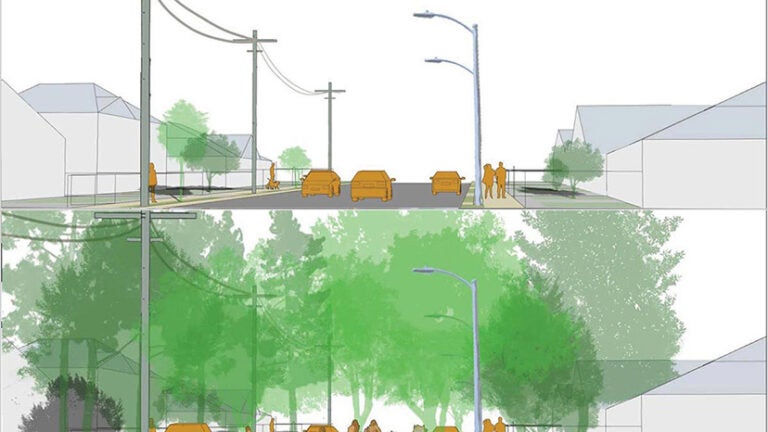
USC experts say tree planting could double shade across L.A.’s Eastside
A new blueprint by USC researchers identifies four places best suited to plant shade trees across Los Angeles’ Eastside to bring cooling relief to thousands of people at risk for heat waves and air pollution in a warming global climate.
In some scenarios, the tree canopy could be doubled across much of neighborhoods near USC’s Health Sciences Campus, the researchers report.
Better still, the scientific tools that the USC researchers used have wider application to guide tree-planting efforts in other communities across L.A.
The USC Urban Trees Initiative provides a science-based approach to help advance L.A. Mayor Eric Garcetti’s Green New Deal, which calls for increasing forest canopy specifically in low-income heat zones by 50% by 2028.
“Planting a thriving urban forest requires diligent planning and input from multiple perspectives,” said Professor John Wilson, principal investigator for the project and founding director of the Spatial Sciences Institute at the USC Dornsife College of Letters, Arts and Sciences. “We have taken a deliberative approach based on robust data and community input to ensure that residents enjoy the many benefits of a rich canopy of trees.”
President Carol L. Folt helped launch the urban trees project as one of many recent sustainability solutions spearheaded by USC. The USC Dornsife Public Exchange leads the urban trees initiative in collaboration with experts and students from SSI, the Center for the Study of Urban Critical Zones and the Landscape Architecture + Urbanism program, as well as the city’s Department of Public Works, community leaders and nonprofit organizations.
For eight months, the USC researchers focused on a five-square-mile Eastside study zone. They identified suitable land for trees based on public access, existing landscaping and rights of way.
Some promising areas to host new trees include:
- Hazard Recreation Center
- Ramona Gardens, a public housing community
- Select small and large residential streets
- Murchison and Hillside Elementary Schools
For example, at Ramona Gardens near Soto Street and Interstate 10, 183 trees could be added, a 66% increase. Renderings show how the public housing community’s vast, open lawns could be transformed into verdant forests of big trees.
“This research gives us a tangible way to use science to create a more equitable urban forest,” said Rachel Malarich, city forest officer for L.A.
Before the city begins planting trees, more study will be needed to determine precise locations, configurations and types of trees. Meanwhile, city officials are seeking funds for tree planting.